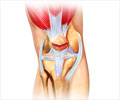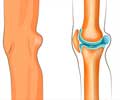
They say the joints will have a full range of movement, be able to bear weight and may even last longer than the current generation of artificial devices.
The feat would save patients from repeat surgery after their original hip or knee replacement, which usually last 15-20 years, has worn out.
An American team carried out a pioneering study on rabbits and believes it paves the way for a future where people can grow bone and cartilage inside their own bodies.
They used a computer to help create artificial frames that were the same size and shape as rabbit hip joints.
The frames were infused with a growth hormone and implanted into ten rabbits after the animals' hip joints had been removed.
Advertisement
Just three to four weeks after surgery, the rabbits had fully regained movement and could bear weight similar to animals who had never undergone surgery.
Advertisement
This is the first time scientists have regenerated a complete limb joint using either harvested stem cells or an animal's own stem cells.
"This is the first time an entire joint surface was regenerated with return of functions including-weight bearing and locomotion," the Daily Mail quoted lead researcher Professor Jeremy Mao of New York's Columbia University, as saying.
"In patients who need the knee, shoulder, hip or finger joints regenerated, the rabbit model provides a proof of principle," he added.
But it may take 20-30 years to develop the more advanced techniques.
The study has been published in The Lancet medical journal.
Source-ANI









